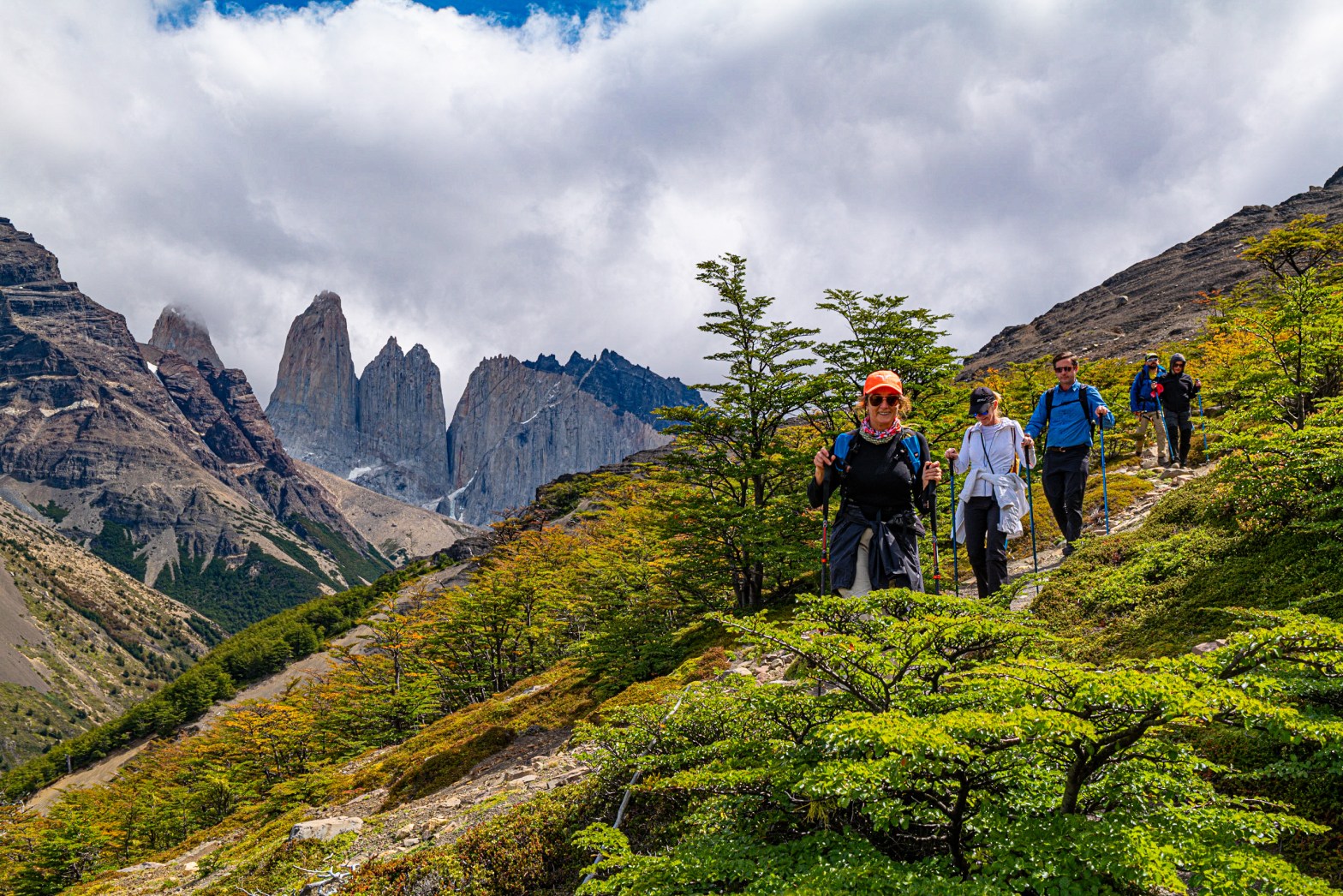Patagonia – the vast region that straddles Chile and Argentina at the southern end of South America – has been on my bucket list since I read Bruce Chatwin’s iconic travel book, In Patagonia, in the 90s. It took me 30 years to finally get there, so a lot was riding on this trip, but Patagonia well and truly exceeded my expectations. Towering mountains, golden steppes, guanacos, pumas and flamingos – what’s not to love! Hard-core hikers come to Chilean Patagonia’s most famous national park – Torres del Paine – for the multi-day O and W treks, carrying big packs, camping, or sleeping in refugios. But if you’re like me and enjoy hiking, horse riding, hearty meals and a comfortable bed, Hotel Las Torres is very hard to beat. The lodge sits inside the National Park, so you’re within striking distance of amazing hikes, without ever having to carry more than a day pack. We spent a week exploring this truly spectacular region. Here are five reasons to pack your hiking boots and book a flight to Chile so you can see it for yourself.
Landcape
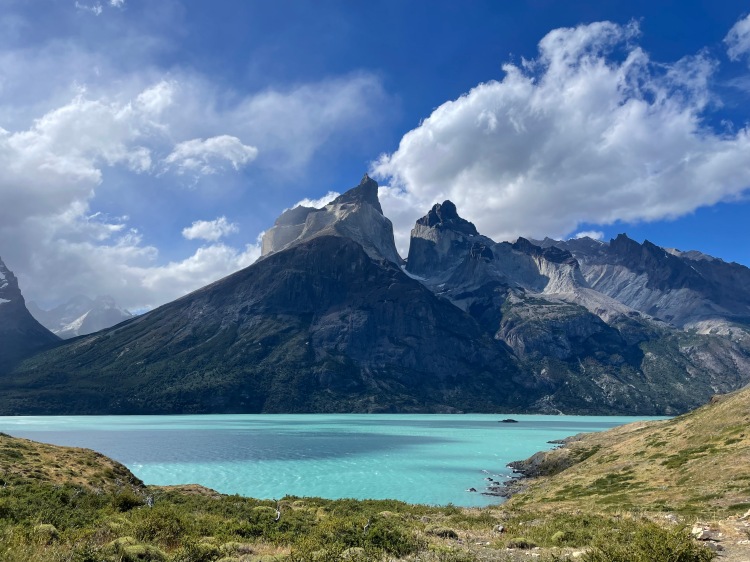
Torres del Paine National Park is 200,000 hectares of jaw-dropping natural beauty. The park takes its name from the three jagged granite peaks at the heart of the mountain range – literally the Towers of Blue in the local Tehuelche language. Technically this is part of the Andes range, but the formations are quite distinct. Formed 12 million years ago when sedimentary layers lifted up through the earth, they’ve since been worn away by glacial movement – leaving mostly granite spires and remnants of dark metamorphic rock. Add to that: vibrant turquoise lakes, waterfalls, huge glaciers, verdant forests and the vast Patagonian steppe, and you’ve got staggering scenery every way you turn!
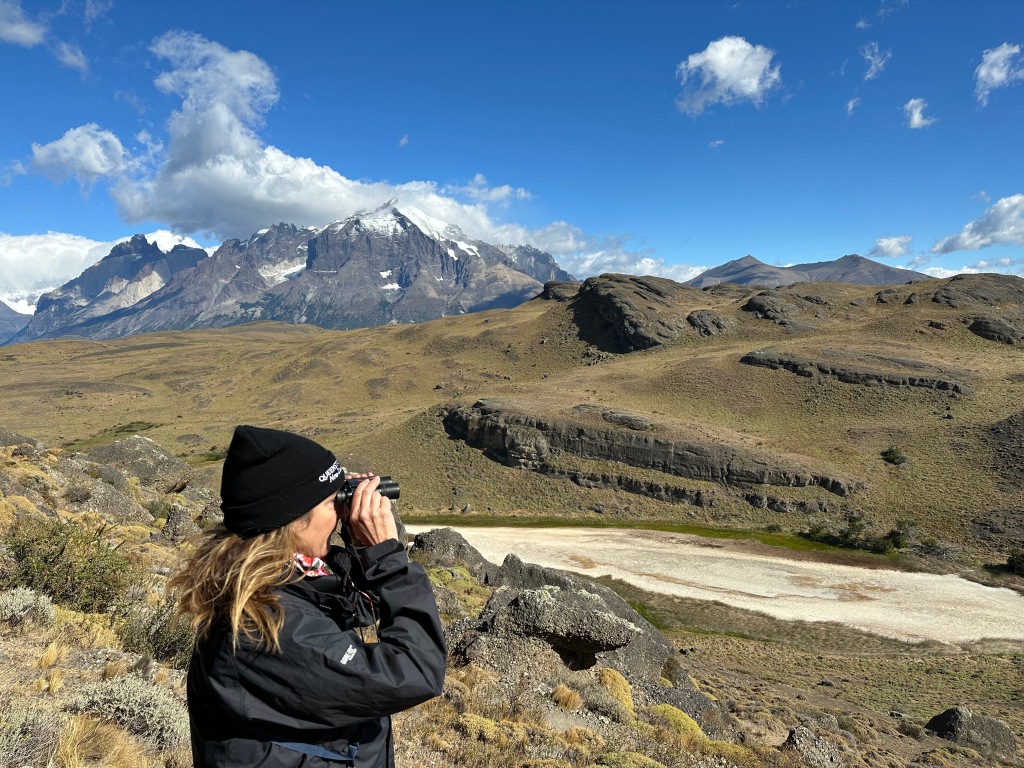
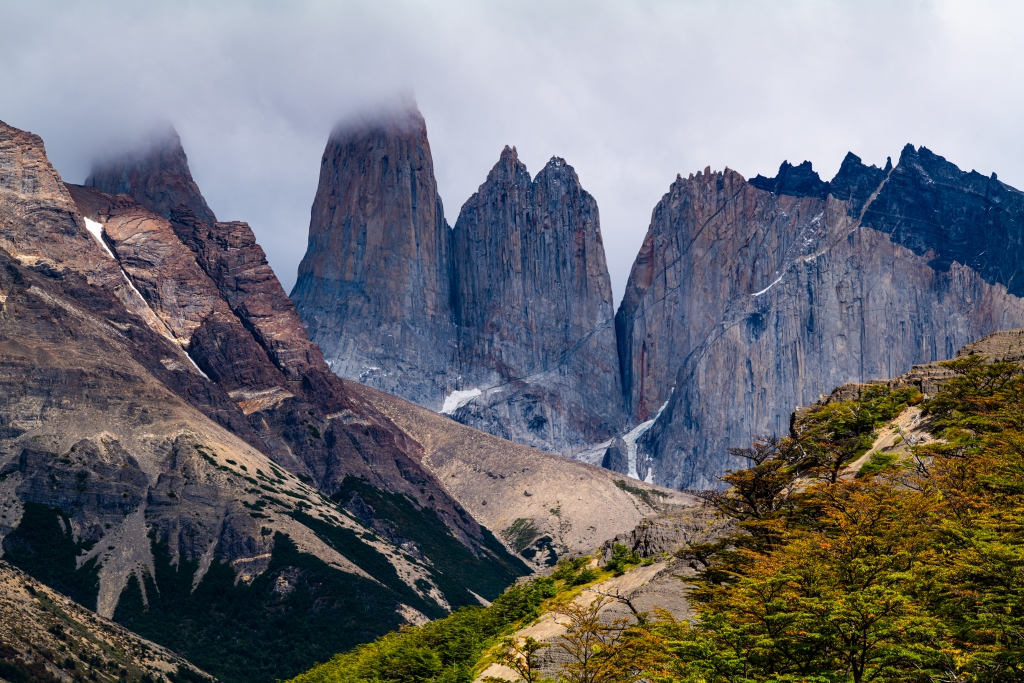
Wildlife
The Patagonian steppe’s most famous resident is the guanaco. These elegant herbivores are related to llamas and camels – well adapted to extreme conditions. You’ll see them in herds, grazing in the pampas, or standing alone at the top of a hill – a sentry on the lookout for predators. Pumas are the big threat here. It’s estimated that between 50 and 100 lions of the Andes roam the Torres del Paine National Park, which means this is probably the worst place to be a guanaco, but it’s the best place in the world to see pumas.

Julie Fison catapults readers into the murky and contested waters of love, morality and justice from the first page of One Punch and holds them, transfixed, right till the end. It’s a story that exposes the consequences of unconditional love; the cost and burden this delivers parents, their children and anyone caught in its more nefarious orbit. One Punch is a raw, urgent and chilling portrait of family loyalty and the frightening repercussions of being blind to the faults in those we love. Read this book and your conviction about what is right and wrong will be changed forever.
Sally Piper, Bone Memories
Unfortunately, that doesn’t mean they are easy to find! We spent three hours hiking one morning, peering at distant rocky outcrops and crevices through our binoculars, without any luck. But that afternoon, on our way back from another hike, we spotted two pumas just metres from the side of the road. OK, when I say we, I use the term loosely. I had nothing to do with the spotting. In fact, it took me some time to see the pumas even after the guide had pointed them out. The dead guanaco, and the small crowd of spectators gathered on the other side of the road gave them away, but they were so well camouflaged, I would have driven right past them. But these were big, well-fed animals, totally indifferent to their audience. Pumas are definitely top of the food chain here.
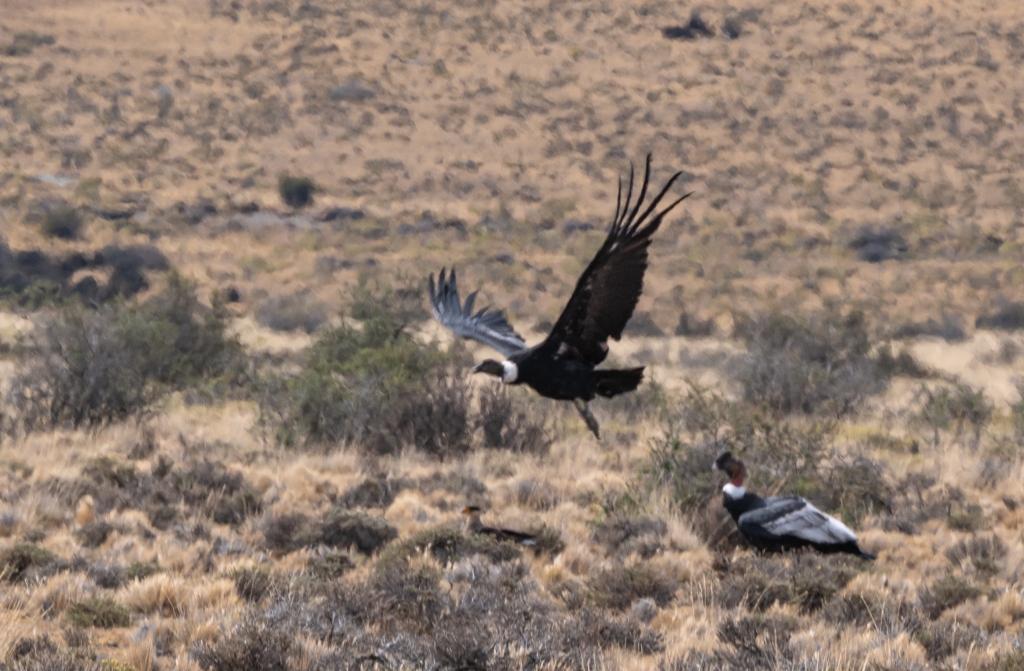
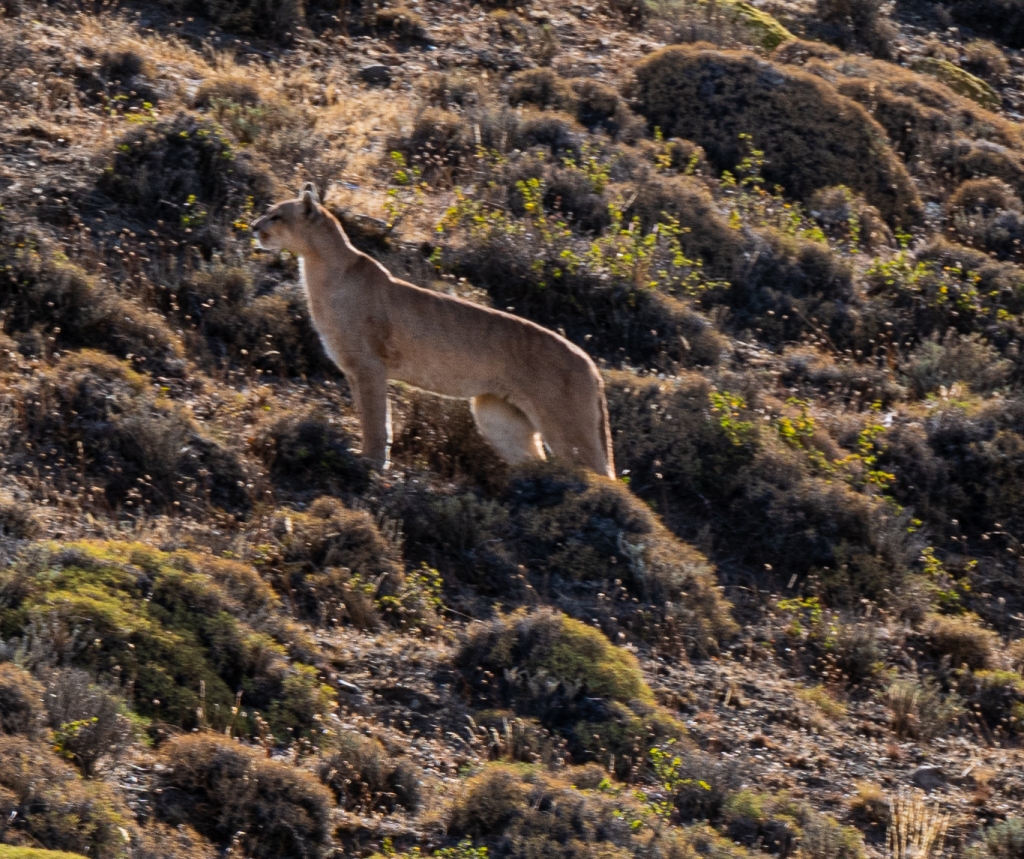
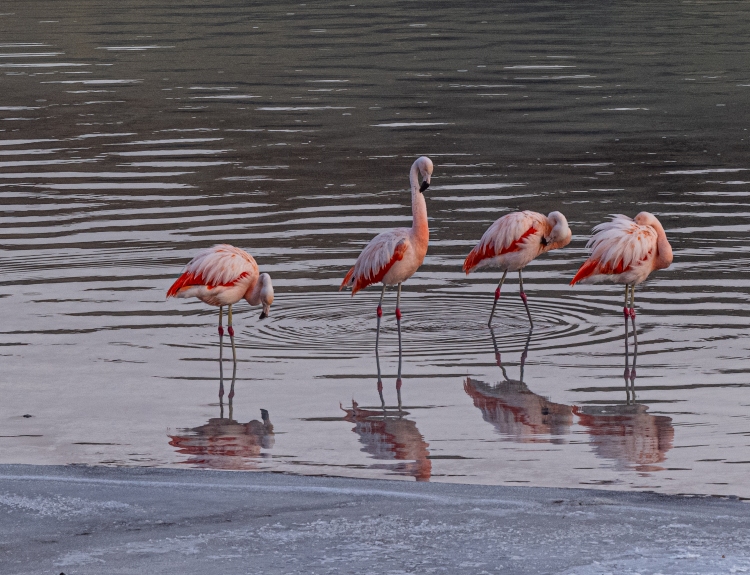
Patagonia is also home to some amazing birdlife. Condors with wingspans reaching up to 3.2 metres patrol the skies, flightless rhea, which look a lot like emus, fossick in the grasslands, and in summer, Chilean flamingos arrive to feed in the shallows of the salty lakes. I definitely wasn’t expecting to see them!
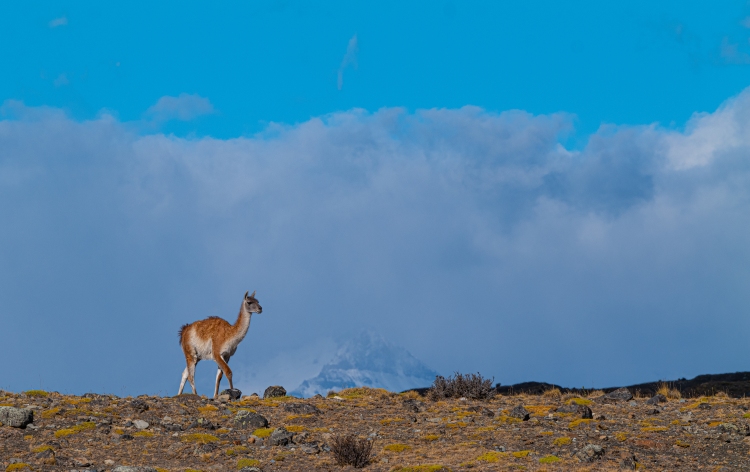
Hiking
If you like hiking, you are going to love the extensive network of trails at Torres del Paine. From the 136 km O trail to the shorter day hikes, the park has something for hikers of every ability. The most famous trek is the 18km Mirador Las Torres – a long, steep, rocky trail with spectacular views of the three peaks. It’s one of the most challenging hikes in the park and the most crowded. If you are looking for the perfect short day-hike, don’t miss Mirador Cuernos. It’s a 6km return trail that takes you past Salto Grande waterfall, Lago Nordenskjold and finally to one of the most spectacular sites in the whole park – Los Cuernos – the horns. The only downside – this is the windiest place in the park. And it definitely lived up to its reputation when we visited!
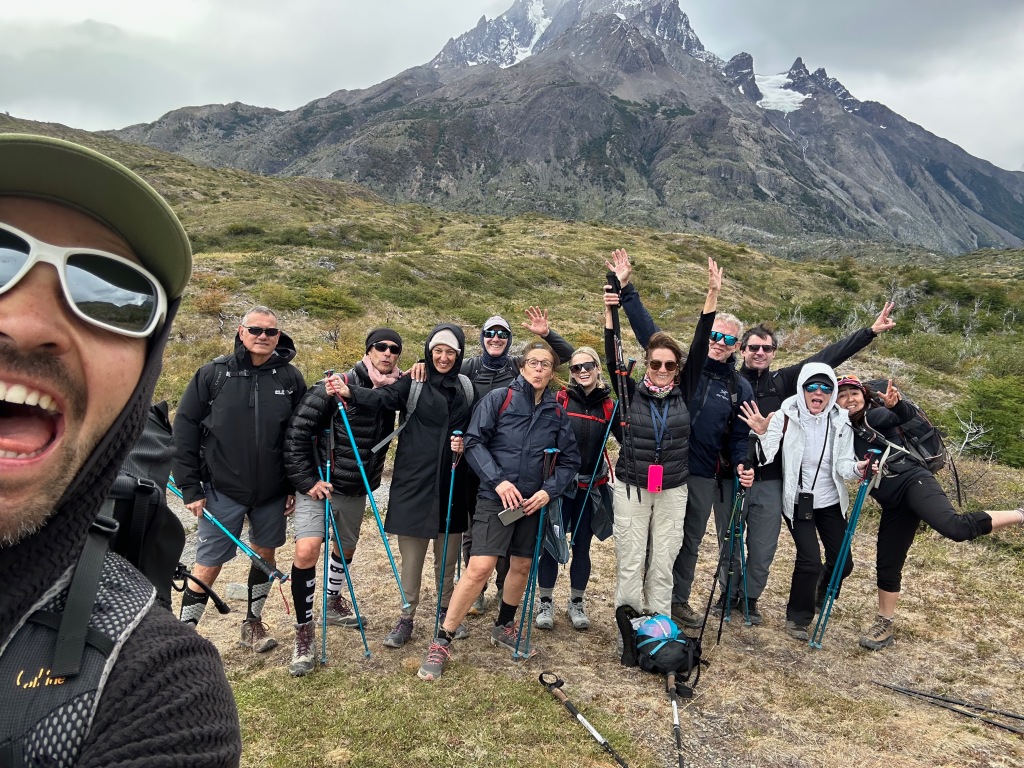
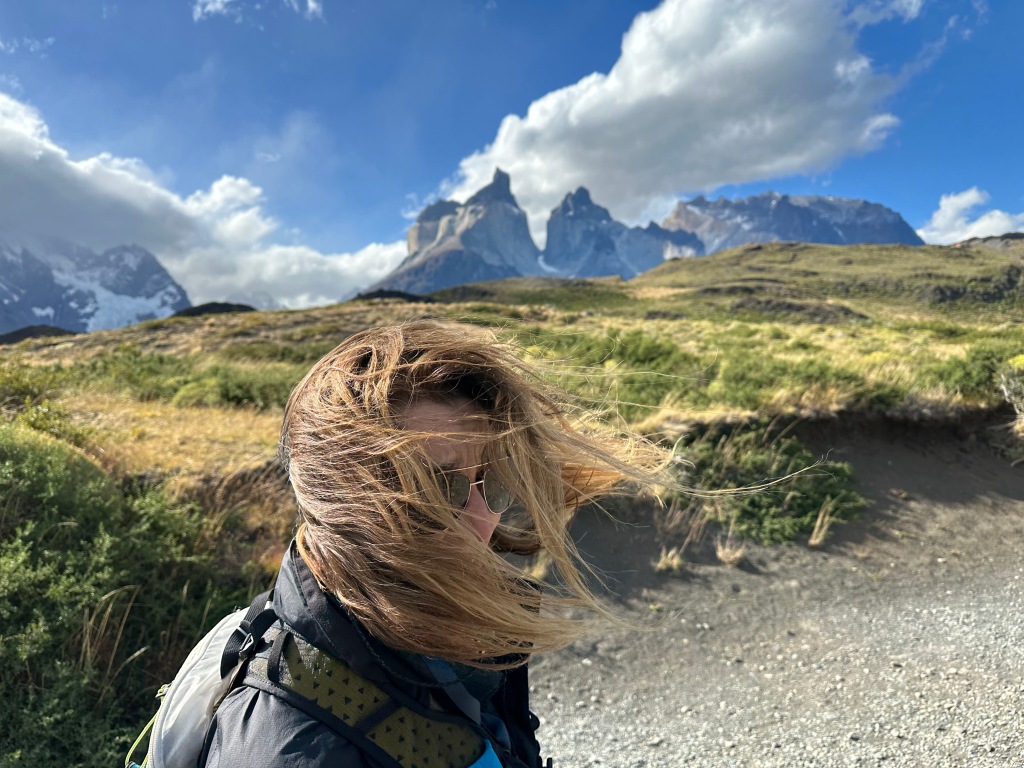
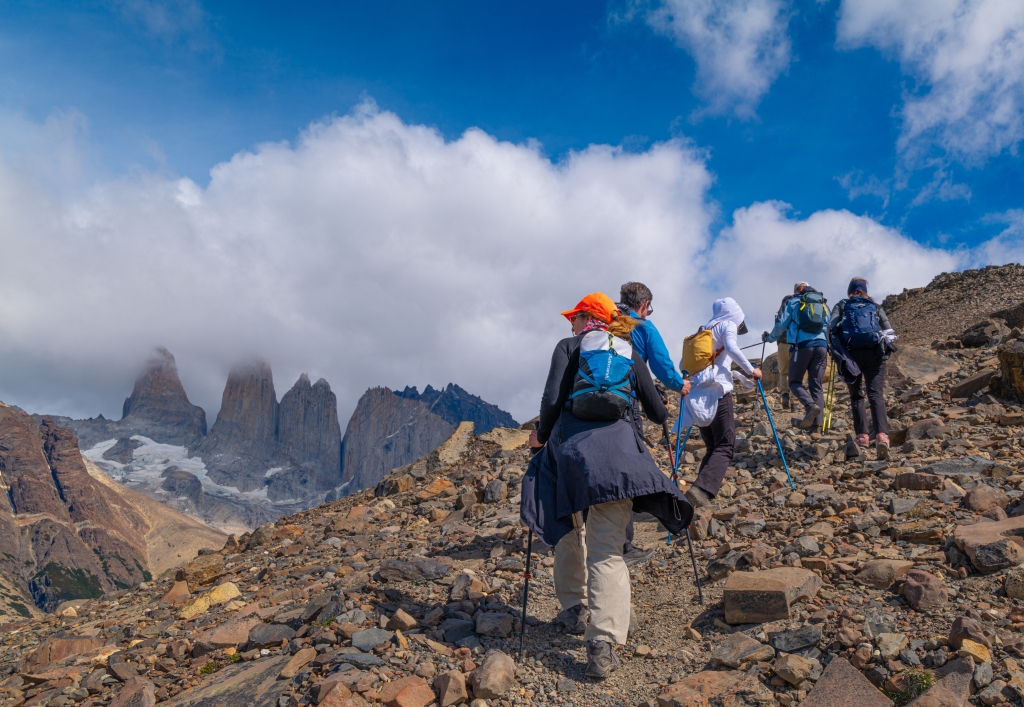
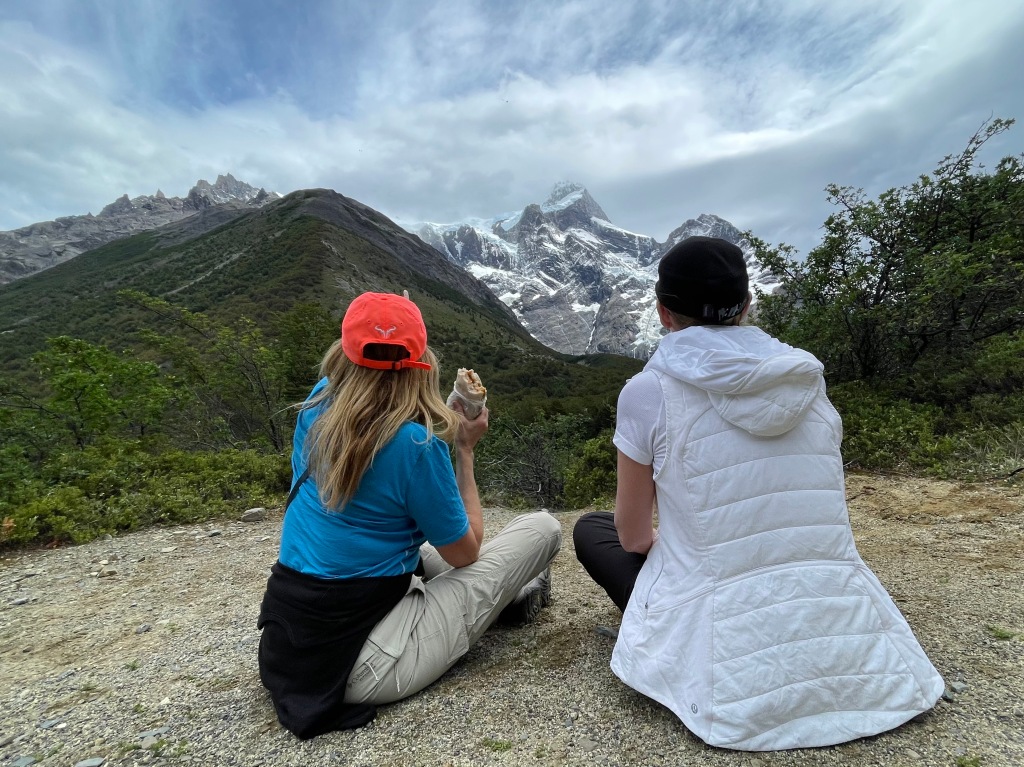
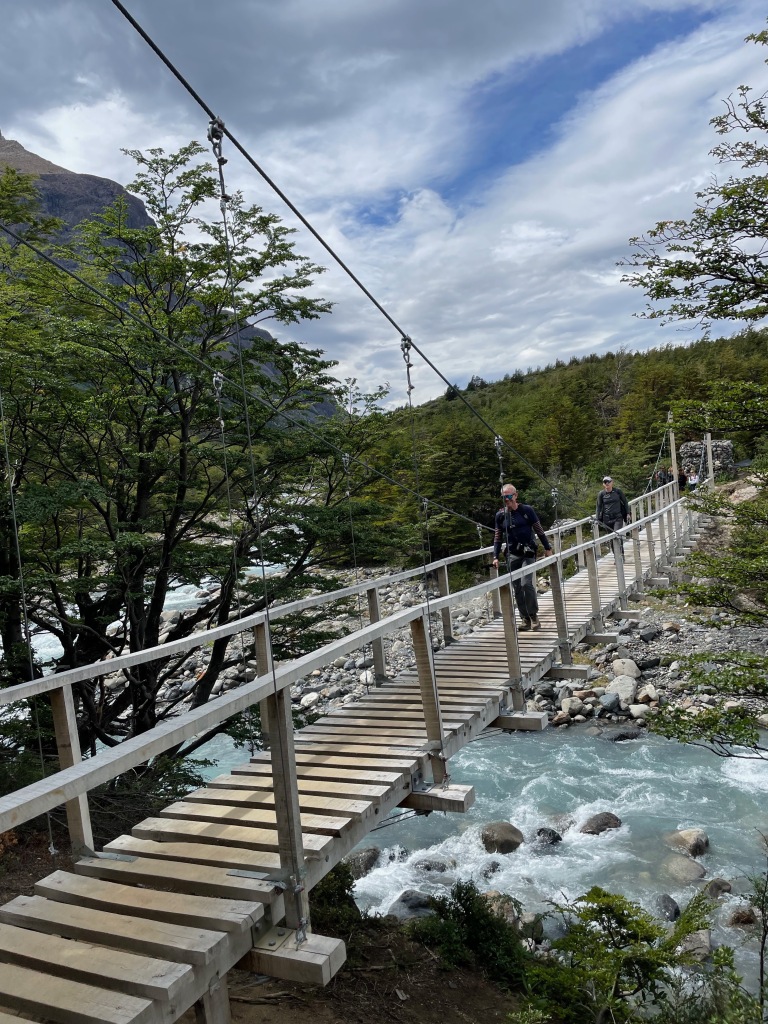
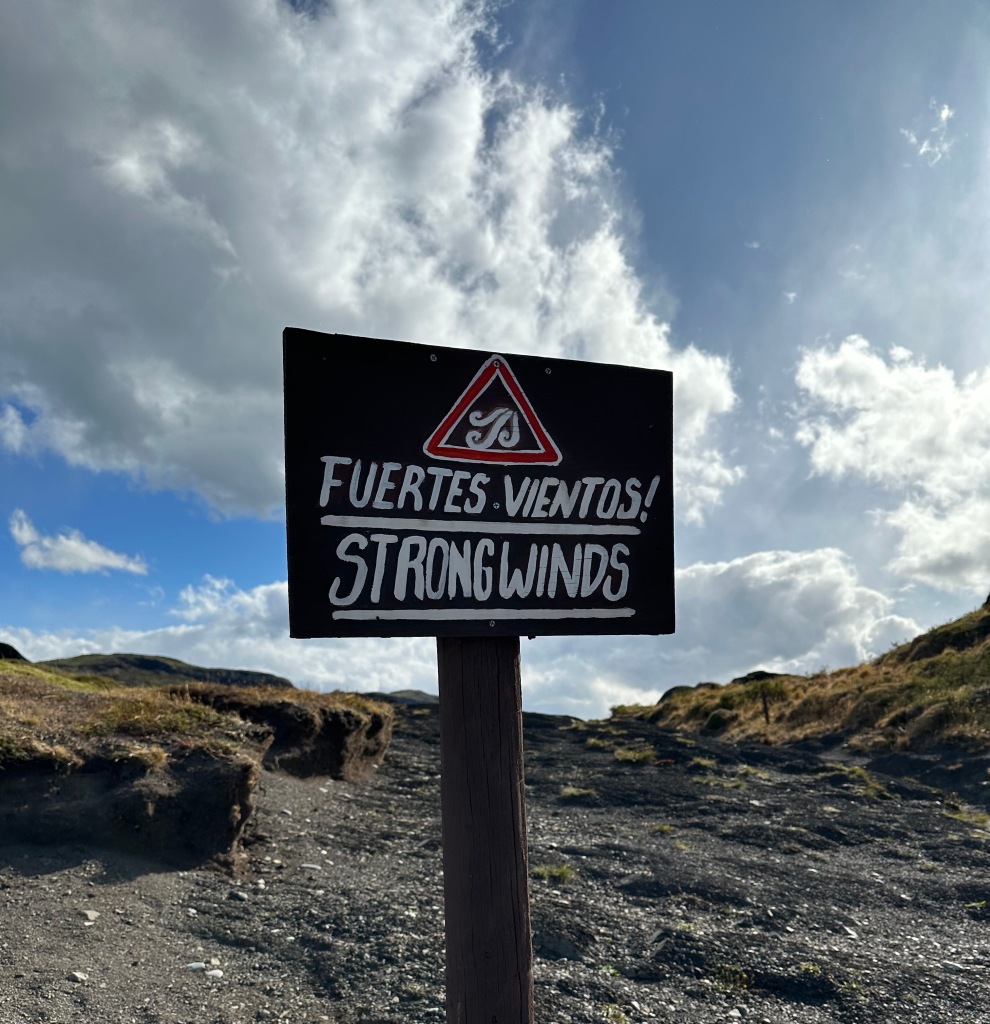
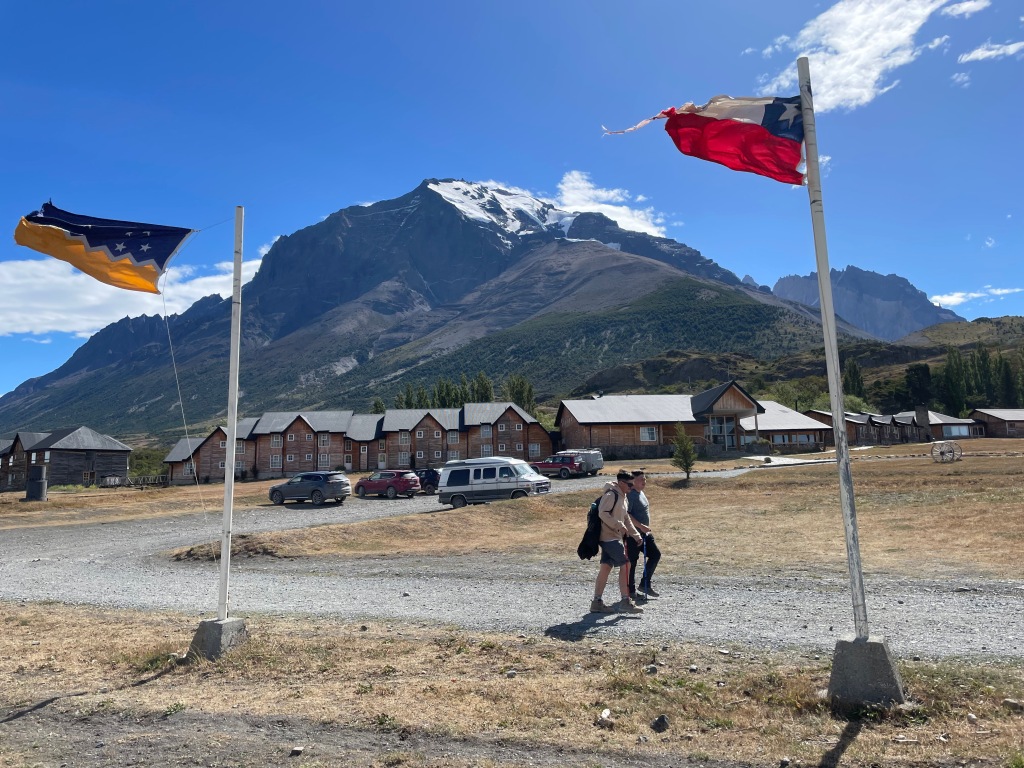
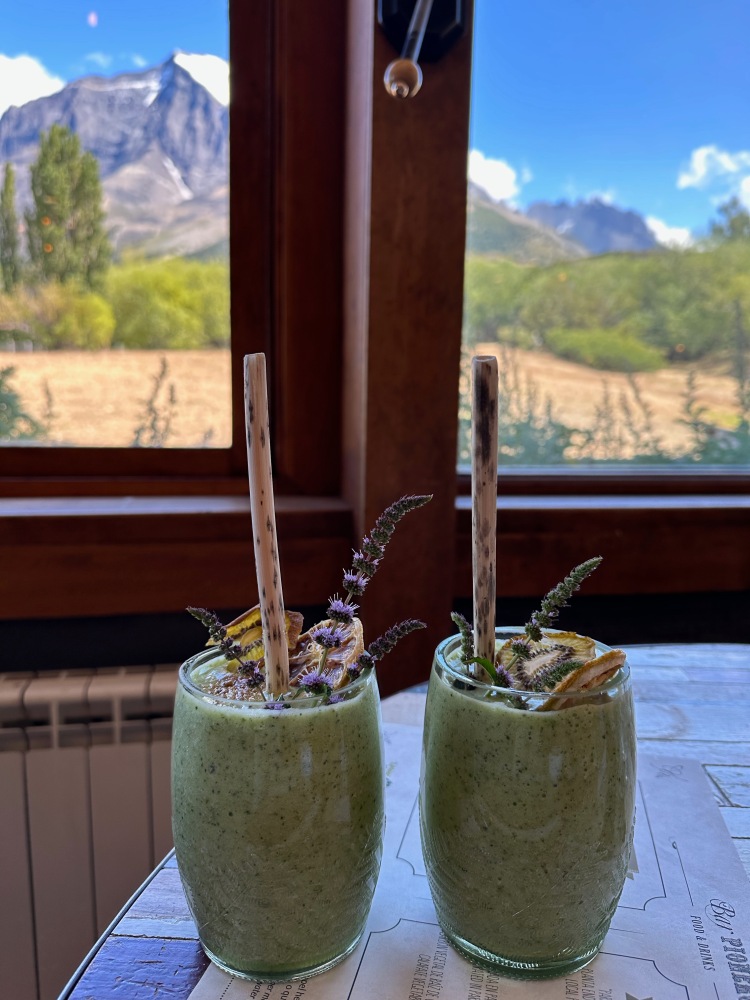
Make sure you pack sturdy boots, poles, a wind/water proof jacket, beanie, gloves and a cap. The weather here is highly changeable. It gets cold, then it gets really, really windy, then it gets hot and sunny, then it rains! A few cords and carabiners are handy for securing caps etc in windy conditions.
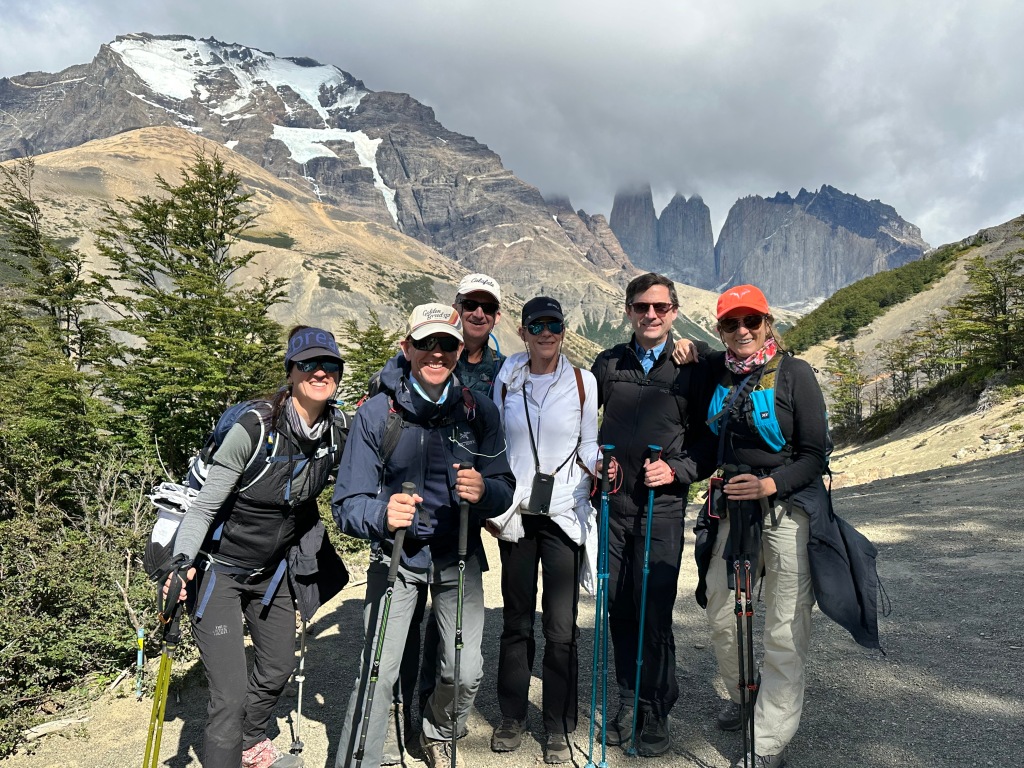
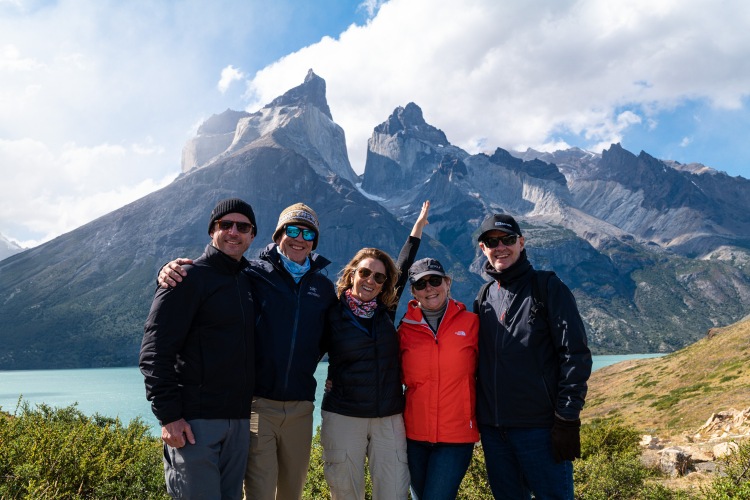
Horse riding
Horses are very much a part of the culture of Patagonia, and you’ll see baqueanos – as cowboys are known in Chile – tending to the horses in their traditional boyner hats. If you are keen to get into the baqueano spirit, Hotel Las Torres is a good place to be. The lodge has a big herd of horses which roam the property. You can often hear them at night munching grass outside your room. By day you can join a trail ride. There is something very surreal about horse riding in Patagonia, and I wouldn’t have missed this chance for the world, but the steep tracks are not for the faint hearted.
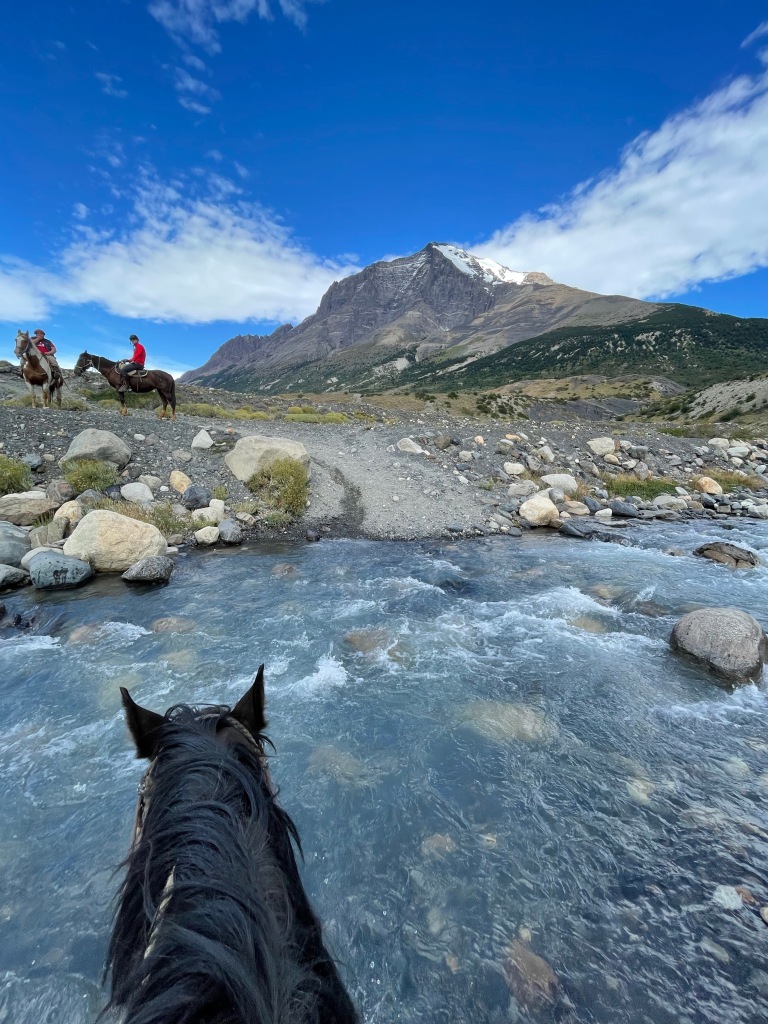
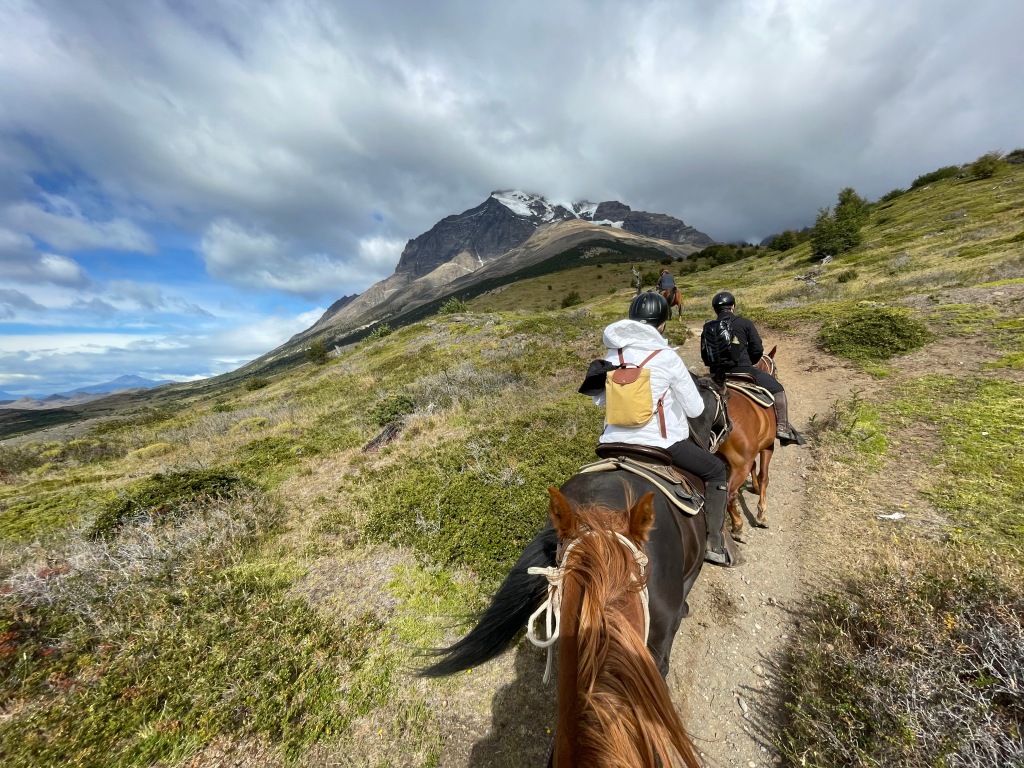

Dogs
You’ll see dogs everywhere in Chile – many of them well-fed street dogs that are cared for by the whole community. In Patagonia, they have big, dangerous jobs. These white maremmas (below) look soft, but they are bred to protect lambs from pumas! I’m not sure if the ones in the pictures below have a proper job, but they sure are beautiful. And who wouldn’t want to enter a cafeteria/ souvenir shop with that pooch sitting on the front step?
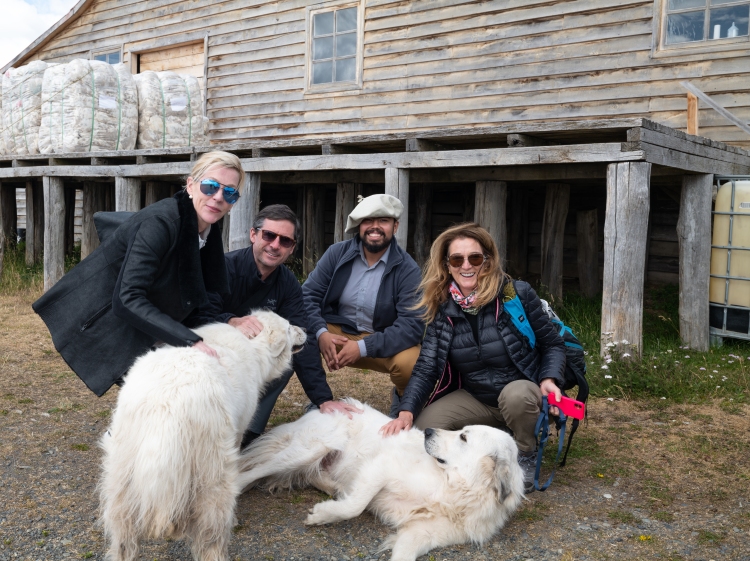
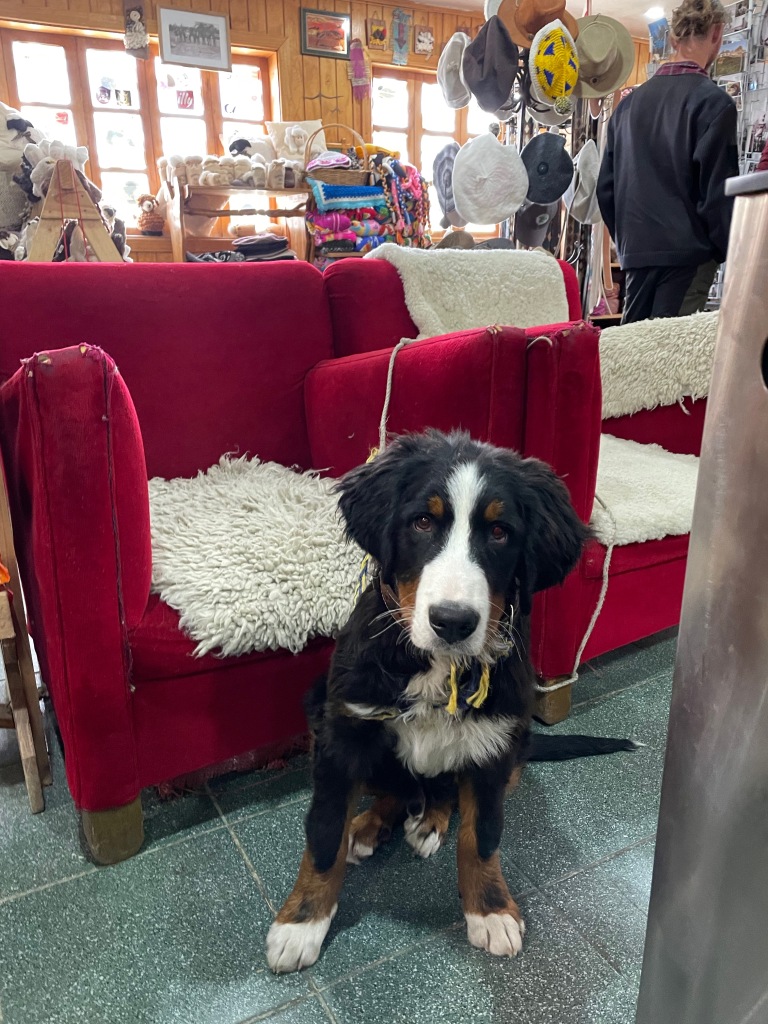
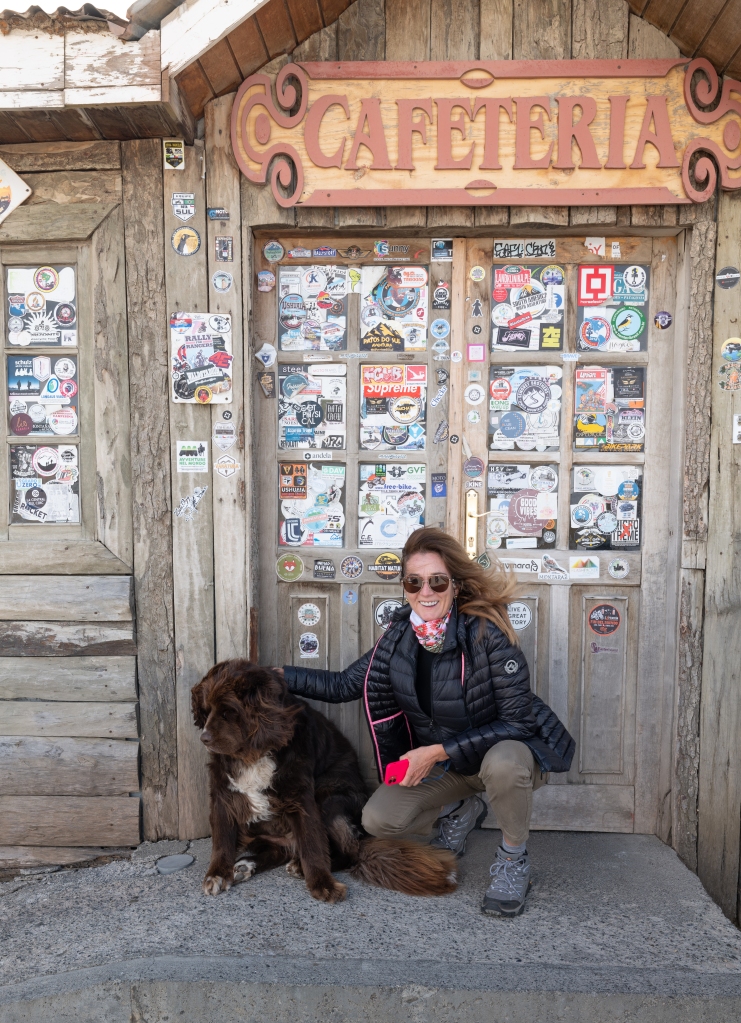
Getting there
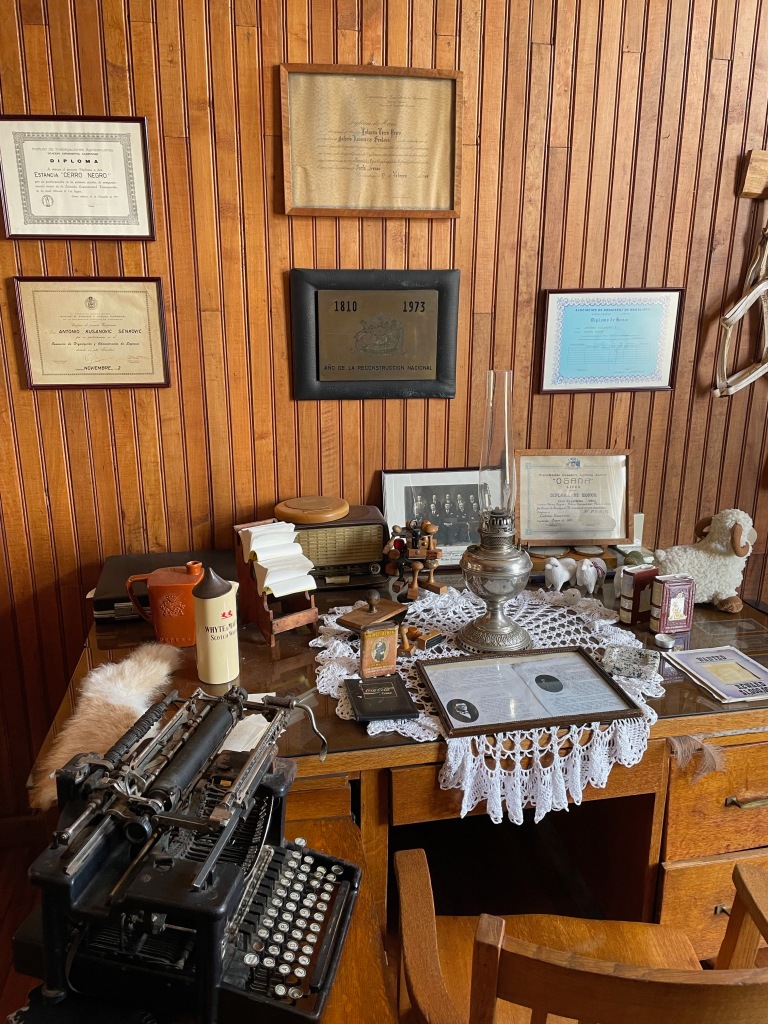
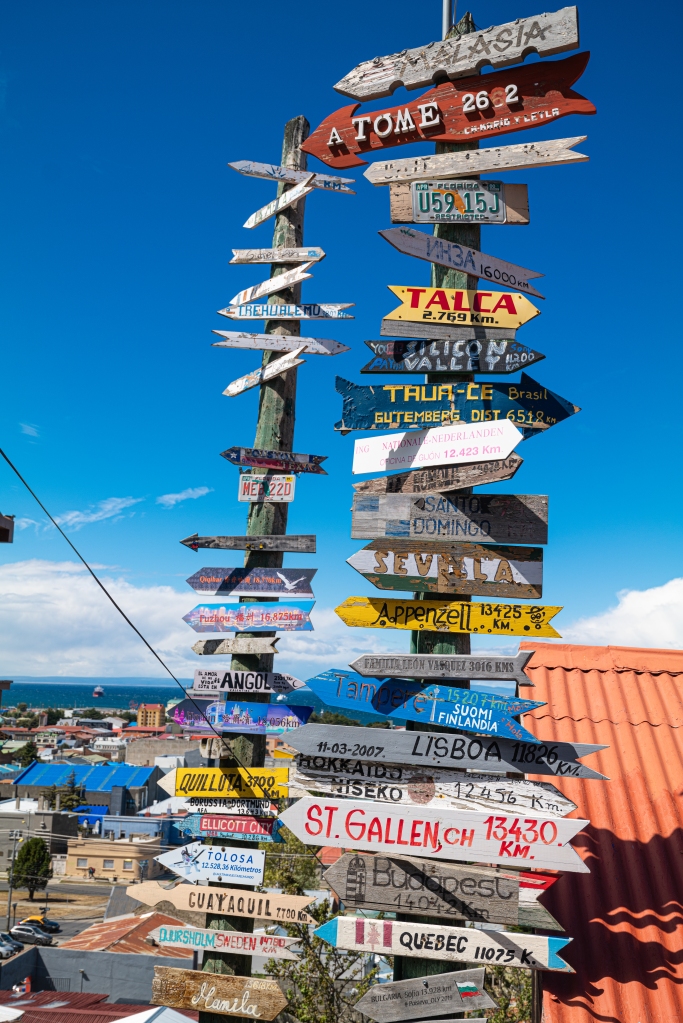
The closest town to Torres del Paine is Puerto Natales – about an hour drive from the national park. The town has an airport, but flights from the capital Santiago are limited, so Punta Arenas is often a better option. Punta Arenas is a five-hour drive away, the last stop on the Ruta del Mundo – the end of the world route. It lies on the Magellan Strait and is a gateway to Antarctica as well as Patagonia. While you’re here, don’t miss the grand central plaza, the cemetery, and the Museo Nao Victoria, with its replicas of Magellan’s ship Victoria and Shackleton’s James Caird. When the weather is fine, the waterfront promenade is a pleasant place to stroll. If the wind gets up, it’s really, really nasty!
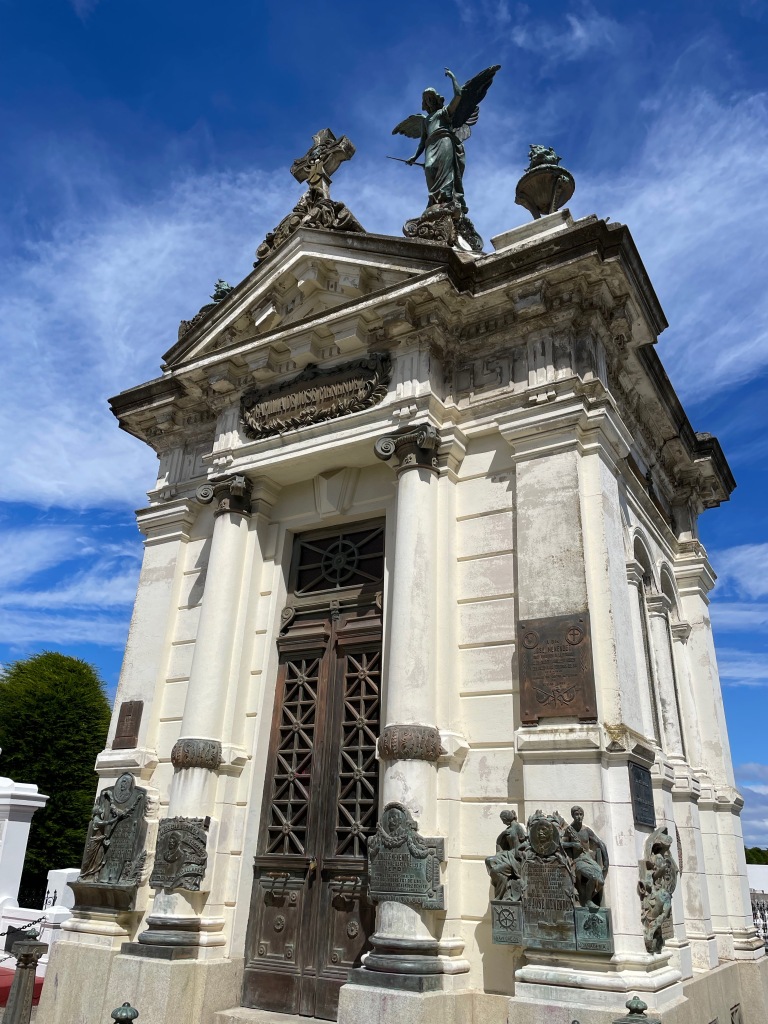
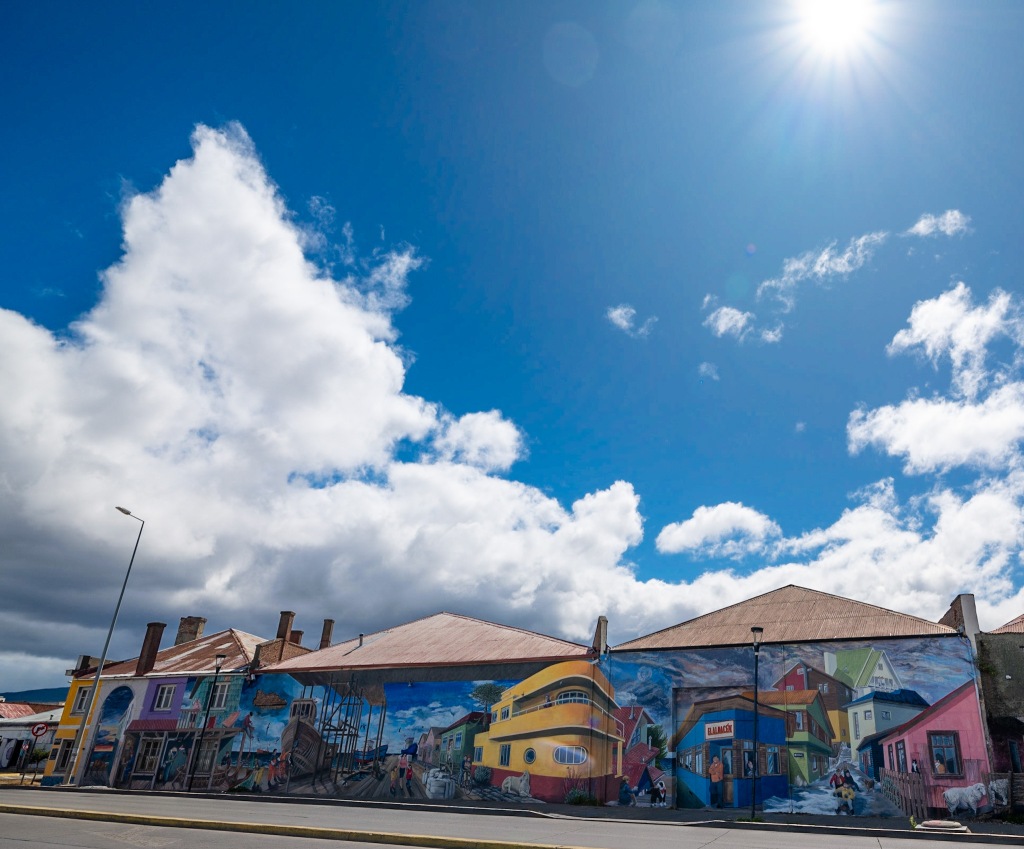
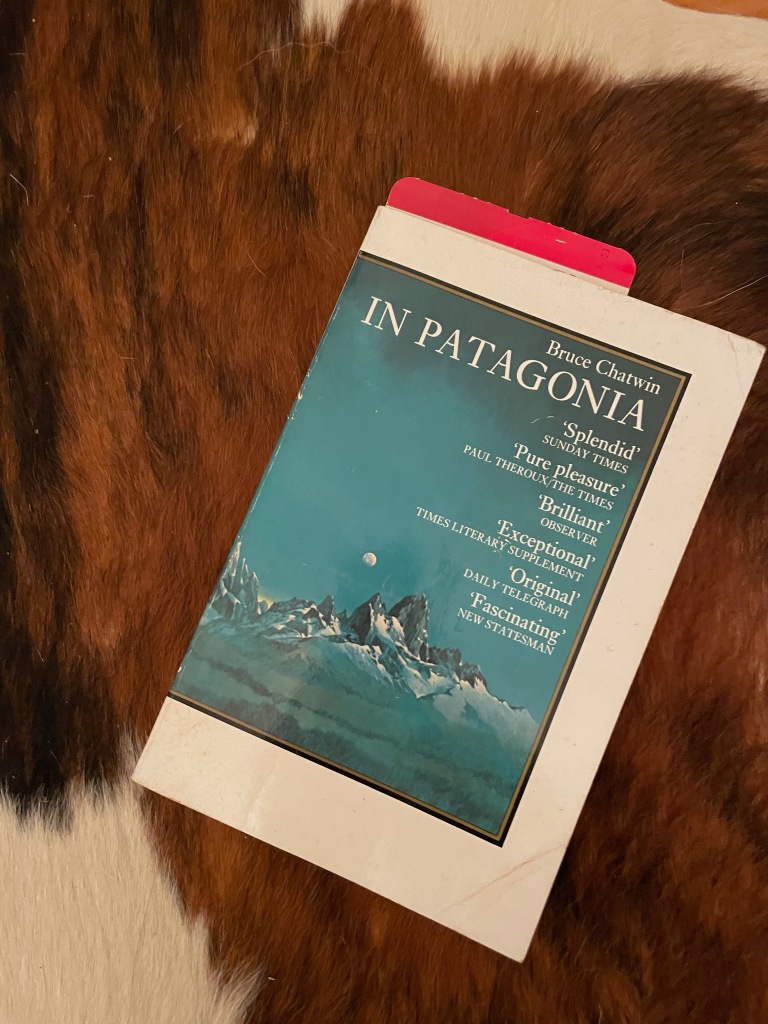
Happy hiking!
Julie
